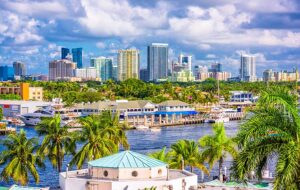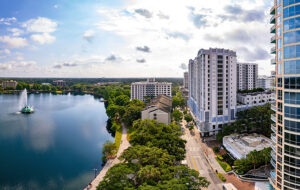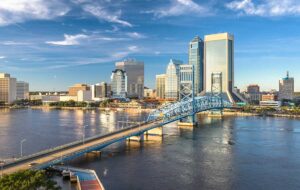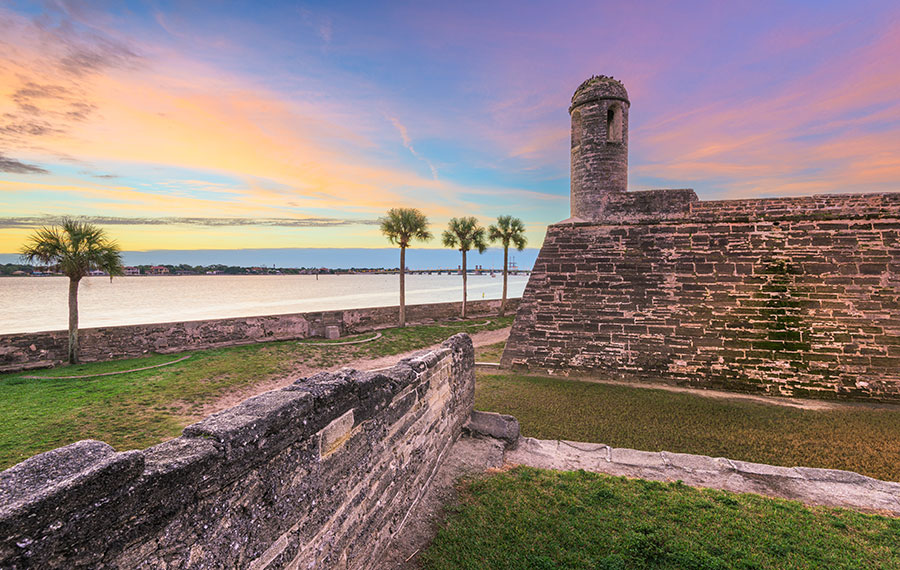
Are you ready to explore the oldest and most historical city in America? Start your journey of discovery with 25 fun facts about St. Augustine, Florida! From its stunning beaches to its abundant cultural sites and activities, this coastal gem has something for everyone. Whether it’s exploring a Spanish fort or admiring architecture, St. Augustine offers an abundance of attractions that will excite even the most experienced traveler. So get cozy as we uncover these incredible tales from the Ancient City – who knows what hidden gems you may find!
1) St. Augustine has many original buildings from its colonial era.
Stepping into the Historic District of Downtown St. Augustine is like going back in time. With its cobblestone streets, intricate architecture, and preserved remnants of colonial history, it’s no wonder St. Augustine is famous as the oldest city in America. There are 36 original buildings of colonial origin, from a time when pirates were rampant and the Spanish ruled the area. And there are 40 more that have been reconstructed and restored from earlier records. It’s a testament to the city’s dedication to preserving its rich history and bringing it to new generations.
2) Ripley’s in St. Augustine is housed in the former Castle Warden Hotel.
The Castle Warden Hotel, once a symbol of luxury and elegance, was left in ruins after a devastating fire in April 1944. The hotel’s eerie reputation only grew in the years following the tragedy, and it became the perfect choice for Ripley’s Believe It or Not Museum in 1949. However, despite its new purpose, the ghosts of the hotel’s past still lingered. Many of Ripley’s employees believe that the spirits of the two women who tragically lost their lives in the horrific fire still haunt the museum to this day. Despite the spooky legends, the museum remains a fascinating attraction for thrill-seekers and history buffs alike.
3) St. Augustine’s Old Jail was actually in use for a time.
A trip to historic St. Augustine offers visitors a glimpse into the past, and the Old Jail on San Marco Avenue is a perfect example. Built by Henry Flagler in 1891, the Old Jail served as the St. Johns County jail for over 60 years, housing prisoners in its harsh and overcrowded cells. Today, visitors can tour the restored building and see firsthand what life was like for those who were incarcerated here. Don’t miss the opportunity to step back in time and experience this unique piece of St. Augustine’s history.
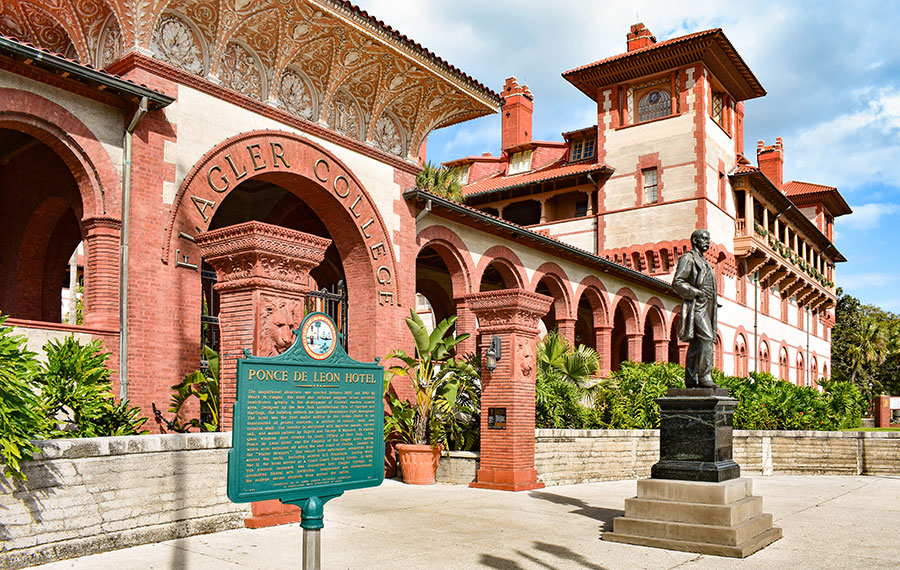
4) St. Augustine got its name from the saint holiday on which it was founded.
On September 8, 1565, a historic event occurred when Pedro Menéndez de Avilés arrived on the shores of Florida. His arrival marked the birth of a new colonial settlement, which he named in honor of St. Augustine, whose feast day fell on that same day. This remarkable occasion marked the beginning of a long and complex history for Florida’s oldest city, with countless stories of bravery, perseverance, and faith. Today, visitors can explore the rich cultural heritage of St. Augustine, from its historic landmarks and museums to its vibrant arts and culture scene. Embark on a journey back in time and discover the allure of this enchanting and timeless place.
5) Flagler College was once one of Henry Flagler’s three great hotels.
In the heart of charming St. Augustine once stood the lavish Ponce de Leon Hotel, a crowning achievement of visionary entrepreneur Henry Flagler. This grand hotel embodied much of Flagler’s dream for the city, with its ornate architecture and opulent amenities. But as times changed, so did the purpose of this iconic landmark. Nearly a century after its grand opening, the Ponce de Leon Hotel was transformed into a center of higher learning, now known as Flagler College. This institution has since expanded, offering a dynamic four-year arts and science program to a thriving student body of thousands. Today, Flagler College stands as a testament to the transformational power of education and the enduring legacies of the past.
6) The Castillo de San Marcos fort’s construction was completed just in the nick of time.
Built at the end of the 17th century, the Castillo de San Marcos stood as a symbol of strength and resilience for the people of St. Augustine. It was good timing! The fortress was put to the test when British forces from the Carolinas launched an attack in 1702. For two months, the Castillo stood strong as the troops attempted to breach its defenses, but ultimately the British were forced to retreat. The Castillo de San Marcos had done its job, protecting the people of St. Augustine and sending a powerful message to the attacking forces. Today, this magnificent structure still stands, a testament to the enduring spirit and determination of the people who built it.
7) According to legend, graverobbers are to blame for several local ghostly apparitions.
St. Augustine is home to many historic landmarks including the Huguenot Cemetery near the Old City Gate. This graveyard is said to be haunted by many ghosts. According to folklore, a group of thieves used to dig up bodies in the nineteenth century to remove valuable items such as jewelry and even gold teeth. Since then, the unhappy spirits of these individuals have been haunting the cemetery grounds, creating an eerie atmosphere. Despite the scary stories, visitors brave enough to walk into the cemetery will be greeted with an air of mystery and awe.
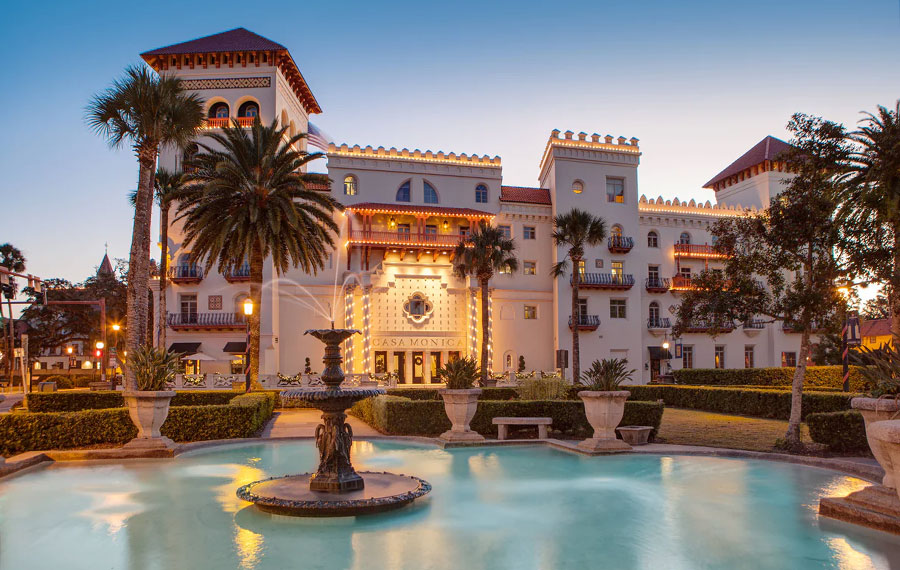
8) St. Augustine is home to the narrowest street in the country.
Treasury Street in Downtown St. Augustine is a unique and intriguing sight to see, as it is the narrowest street in the country, measuring just seven feet wide. Its purpose was to provide direct access from the waterfront Bay Street to the one-time Royal Spanish Treasury. As local legend has it, the street was designed specifically to accommodate two men carrying a chest of gold to and from ships docked on the bay. It was purposefully not wide enough for a horse-drawn carriage to drive through, a deliberate design to prevent any potential pirates from stealing the valuable treasure.
9) St. Augustine played a major role in America’s civil rights struggle.
St. Augustine is a picturesque coastal town known for its charming architecture and pristine beaches. But in 1964, it was also the epicenter of a turbulent battle for civil rights. Dr. Martin Luther King, Jr. arrived in St. Augustine with a mission to challenge the racist attitudes and segregation that plagued the area’s hotels, shops, and restaurants. However, his efforts were met with violent opposition from groups like the Ku Klux Klan and corrupt police officers. These disturbing incidents were captured in powerful imagery that helped to sway Congress to pass the Civil Rights Act of 1964. St. Augustine may have been a battleground in the quest for equal rights, but it ultimately helped to shape America’s civil rights landscape.
10) The city’s creative culture has drawn many talented artists throughout the years.
St. Augustine, Florida, is known for its rich history and vibrant culture. Over the years, the city has been home to many famous residents who have left their mark on the world. Perhaps the most well-known of these residents are Ray Charles and Gamble Rogers, two influential musicians who revolutionized their genres. Additionally, Marjorie Kinnan Rawlings and Zora Neale Hurston, both celebrated authors, also called this city home. Their literary contributions have had a lasting impact on American literature, making St. Augustine a hub for creative expression and artistry. These famous residents are a testament to the incredible history and culture of this beloved Floridian city.
11) The Lightner Museum was once one of Henry Flagler’s three great hotels.
Nestled in the heart of historic St. Augustine lies a true architectural wonder. Completed in 1888 by the famed industrialist Henry Flagler, the Alcazar Hotel was a dazzling symbol of luxury and sophistication. But after 60 years, the hotel was transformed into something quite different – the Lightner Museum. Its halls now host an incredible collection of artifacts and curiosities, carefully curated to astound and amaze visitors from across the world. In 1973, the City of St. Augustine made yet another change, adding their municipal offices to the building. The site of the Alcazar Hotel continues to be a key landmark in the city’s historic district, showcasing the fascinating history of this remarkable location.
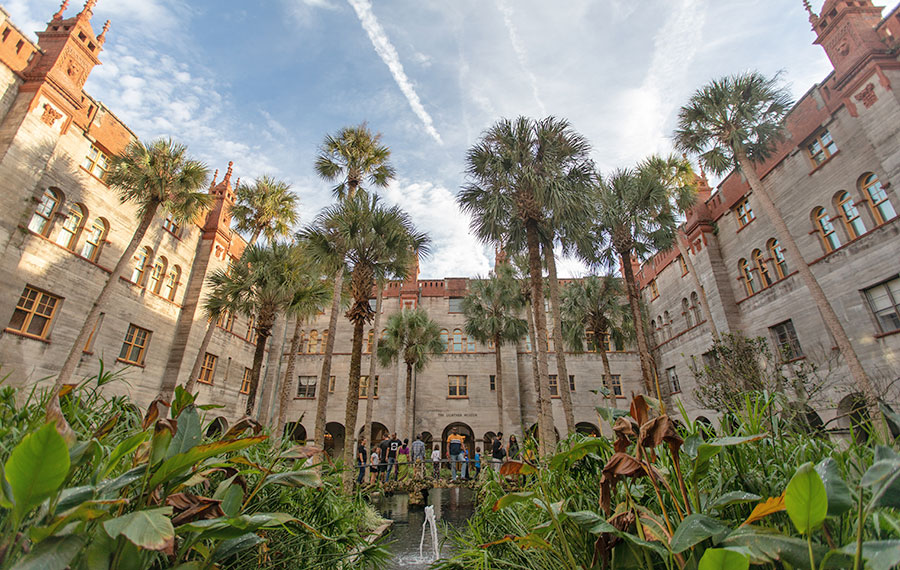
12) St Augustine hosted about 2 million visitors in 2020.
St. Augustine is a city that has captured the hearts of millions of visitors from around the world. With a staggering 2 million visitors making their way to this gem in 2020, it’s no wonder that it continues to grow in popularity year by year. As the tourism market slowly recovers from pandemic trends, this historic city is once again buzzing with activity. The Castillo de San Marcos remains the number one hot spot, with its impressive stone walls and rich history. Visitors are also drawn to the charming attractions along St. George Street and the stunning beaches that surround the city. For travelers of all ages and interests, St. Augustine has something truly unique to offer.
13) The Castillo de San Marcos is the oldest masonry fort in the continental U.S.
Along the bayside in St. Augustine lies the Castillo de San Marcos National Monument, a historic fortress that has withstood the test of time. This remarkable structure is not only notable as the oldest masonry fortress still intact in America, but it is also a symbol of cultural significance. The structure’s tenacity and unwavering strength are a testament to the enduring Spanish heritage that has shaped the Sunshine State for generations. Despite facing many battles over the years, this fortress has never been captured, making it a true marvel of ingenuity and resilience. A visit to the Castillo de San Marcos is a step back in time that serves as a reminder of the rich cultural history that has shaped the country we know today.
14) Flagler College features a remarkable 79 Tiffany Glass windows.
Discover the history and beauty of Flagler College through its Historic Tours and witness the stunning architecture that has been preserved over the years. One room that truly steals the show is the grand dining room, boasting an impressive 79 Louis Comfort Tiffany Stained Glass windows. The intricate designs and stunning colors of each window will leave you in awe. As if that wasn’t enough, the walls and ceiling are adorned with hand-painted murals that add to the room’s grandeur. Walking through this room, you’ll feel as though you’ve stepped back in time to a bygone era of elegance and luxury. The Historic Tours of Flagler College are a must-see for anyone who appreciates the beauty of finely crafted architecture.
15) The Bridge of Lions features two Medici lions sculpted of Carrara marble in Florence.
Stepping onto the Bridge of Lions is like entering a world of art and history. This majestic bridge spans the Intracoastal Waterway of Matanzas Bay and connects bustling downtown St. Augustine to the tranquil Anastasia Island. The bridge is a feast for the eyes, but the two Medici lions sculpted of Carrara marble in Florence steal the show. These majestic lions stand at the bridge’s entrance, proudly guarding their domain. Built in 1927, the Bridge of Lions has witnessed the city’s rich history unfold, and to this day, it remains one of the most iconic landmarks. While the bridge’s double-leaf bascule design allows boats to pass through its drawbridge with ease, it is the Medici lions that truly make it unforgettable.
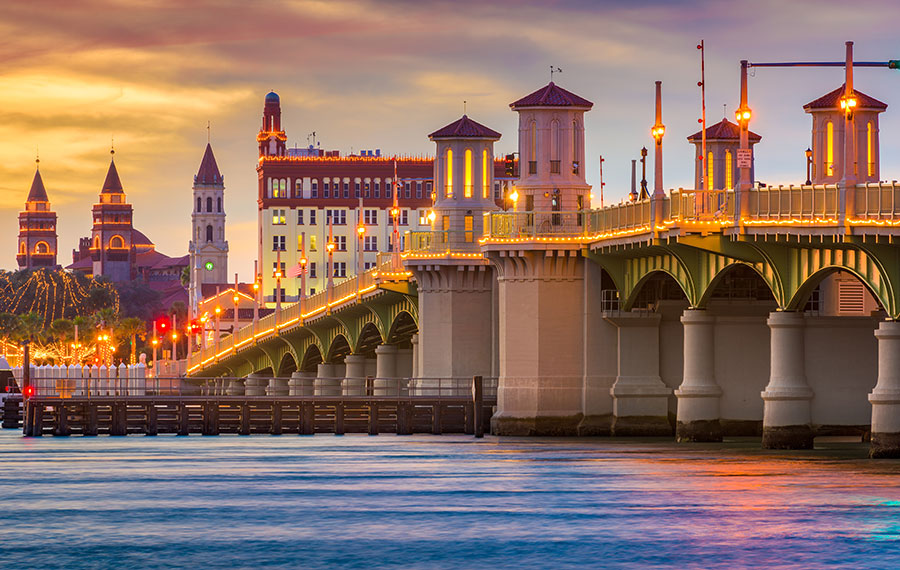
16) St. Augustine’s Alligator Farm has a remarkable distinction in the zoo world.
As one of the oldest continually operating attractions in Florida, the St. Augustine Alligator Farm Zoological Park is a true wonder. Founded way back in 1893, this incredible facility has the distinction of being the only place in the entire world where you can observe all 24 species of crocodilian in one spot. From the mighty American alligator, who calls these swamps home, to the strange and elusive Gharial from India, you’ll be able to experience the full spectrum of these fascinating creatures. For lovers of wildlife and nature, there is truly no place like the St. Augustine Alligator Farm.
17) Casa Monica was one of Henry Flagler’s three great hotels.
Built in 1888 by Henry Flagler, the Casa Monica was a luxurious hotel in its prime. But by 1932 the Great Depression had taken its toll and the hotel was closed. After being abandoned for 30 years, it was transformed into a courthouse for St. Johns County. But in 1999, the Casa Monica was beautifully restored to its original splendor. Today, the hotel serves as a stunning historical landmark, catering to guests from around the world. Now part of the Marriott Autograph Collection, this 4-star accommodation lends its ornate Moroccan-themed decor to the guest experience. It’s remarkable to think that, out of Flagler’s three great hotels, the Casa Monica is the only one serving its original purpose – thanks to its impressive history and remarkable restoration.
18) St. Augustine is the oldest city in the U.S.
With its Spanish colonial architecture and cobblestone streets, St. Augustine is a historical gem of the United States. This iconic city holds the title of being the oldest continuously occupied settlement of European and African-American origin in the whole country. It was founded in 1565, a full 55 years before the Pilgrims landed at Plymouth Rock. Despite various changes over the centuries, the city has always been a vibrant hub of life along the coast of Florida. From the Castillo de San Marcos to the narrow alleys and hidden courtyards, St. Augustine’s charm is everlasting.
19) The city’s iconic lighthouse has 219 steps.
The St. Augustine Lighthouse & Maritime Museum is more than just a landmark, it’s an experience. From the moment you catch a glimpse of its bold black and white stripes spiraling up towards the sky, you know you’re in for something special. As you make your way up the 219 stairs, you can already feel the thrill building. And then, finally, you reach the top – 165 feet up – and the view takes your breath away. It’s a panorama of the Atlantic Ocean on one side and the city of St. Augustine on the other, all framed by the striking contrast of the lighthouse’s colors. It’s a view that’s well worth the effort of the climb.
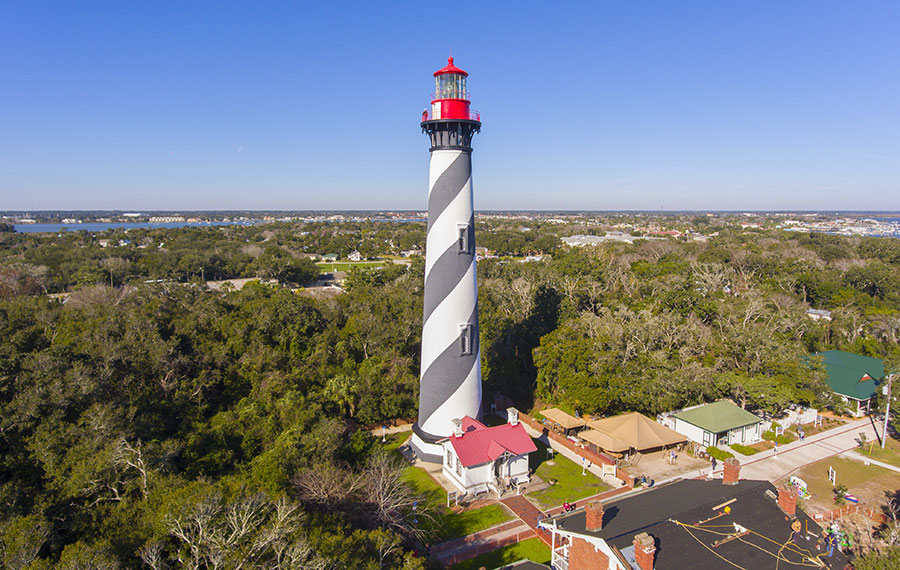
20) The Old City was once in planning to be an exclusive winter resort.
The Gilded Age of the late 19th century was a time of immense wealth and extravagance, in which conspicuous consumption was the norm among America’s elite. Few individuals embodied this era of luxury and opulence more than Henry Flagler, the visionary industrialist who sought to transform St. Augustine, Florida into a winter paradise for the country’s wealthiest citizens. Though his plans did not unfold exactly as he had envisioned, Flagler’s lasting architectural achievements in the historic city have left an indelible mark on the area, drawing in countless visitors each year to marvel at his remarkable legacy.
21) St. Augustine’s Pirate Museum is an import.
The St. Augustine Pirate & Treasure Museum is a must-visit attraction for anyone traveling to the area. This museum, which was relocated from Key West in 2010, is now thriving in its new home on South Castillo Drive. What makes this attraction stand out is its impressive collection of pirate artifacts, including one of only three authentic Jolly Roger flags remaining in the world. This black and white skull and crossbones emblem is a symbol of piracy that has been feared by sailors for centuries. Visitors to the museum can see this rare artifact up close, along with a plethora of other fascinating items from the golden age of pirates.
22) St. Augustine has a few nicknames honoring its age.
This historic city has been called by many names over the centuries, including “Ancient City,” “Old City,” and “The Nation’s Oldest City.” Visitors who wander the cobblestone streets and marvel at the well-preserved architecture will understand why these monikers are well-deserved. St. Augustine’s rich history dates back nearly five centuries, and it has served as a major port, military base, and cultural hub throughout the years. From its iconic landmarks to its delicious cuisine, there is so much to discover in this charming and storied destination.
23) Henry Flagler’s 1923 East Coast Railway building now hosts a winery.
A piece of history has come alive at the San Sebastian Winery on King Street in downtown St. Augustine. Henry Flagler’s 1923 East Coast Railway building has now been transformed into one of the largest wineries in Florida. With 40,000 gallons of wine resting in its vast 18,000 square feet space, the San Sebastian Winery offers an unforgettable experience to all wine enthusiasts. From the moment you step inside, you’ll immediately be captivated by the remarkable craftsmanship and rich history of the building. If you are a wine lover, this is the perfect place to immerse yourself in the world of wine and explore the sheer beauty of the surrounding area.
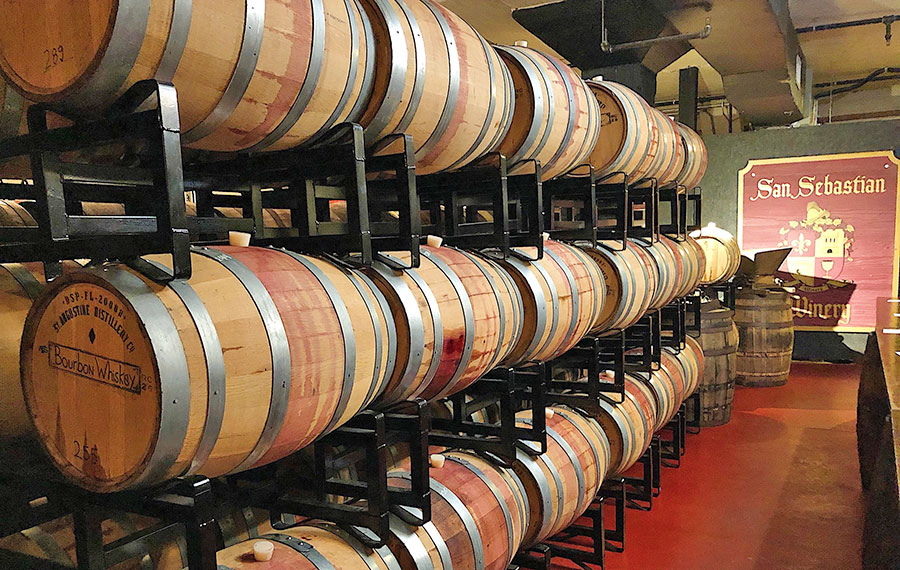
24) St Augustine has only been hit directly by one hurricane in recent history.
The Ancient City has seen its fair share of turbulent weather over the years. However, despite being on the coast, it has only faced one direct hit from a hurricane in the past century. That one storm was Hurricane Dora, which made landfall in 1964. With wind speeds of 110 mph and some parts of the city experiencing flooding, the fallout from Hurricane Dora could have been worse. The total cost of the damage came in at over $5 million, a reminder of the power and danger that can come with these natural disasters.
25) Fort Mose was the site of the first legally sanctioned African settlement in the U.S.
Fort Mose is a site steeped in history and bravery. It was here that a group of African people, seeking freedom from enslavement in the British colonies north of Florida, found a haven over 300 years ago. Upon reaching the Spanish outpost, they were granted asylum and established the first legally sanctioned African settlement in the United States. Today, Fort Mose has become a state park and visitor center, a place where visitors can learn about the courageous journey of these people and the role they played in shaping the history of our nation. It’s a site that not only honors the struggles and bravery of those who came before us but inspires us to continue fighting for justice and equality for all.
From the impressive architecture of its oldest buildings to its charming streets and coastline, St. Augustine celebrates its rich history and culture in many ways. Historic locations like Flagler College, St. George Street, Ripley’s Believe it or Not!, as well as the Spanish Colonial influence on buildings throughout the city provide a unique experience for travelers. Exploring these 25 fun facts about St. Augustine reveals not only a historical, but cultural journey which is sure to amaze visitors. Whether you’re looking for family-friendly activities, inspirational sights or a ghostly experience – visiting this wonderful part of Florida is sure to captivate your senses. Be sure to check out our St. Augustine Vacation Guide where we’ve compiled everything you need to visit this incredible Ancient City!
